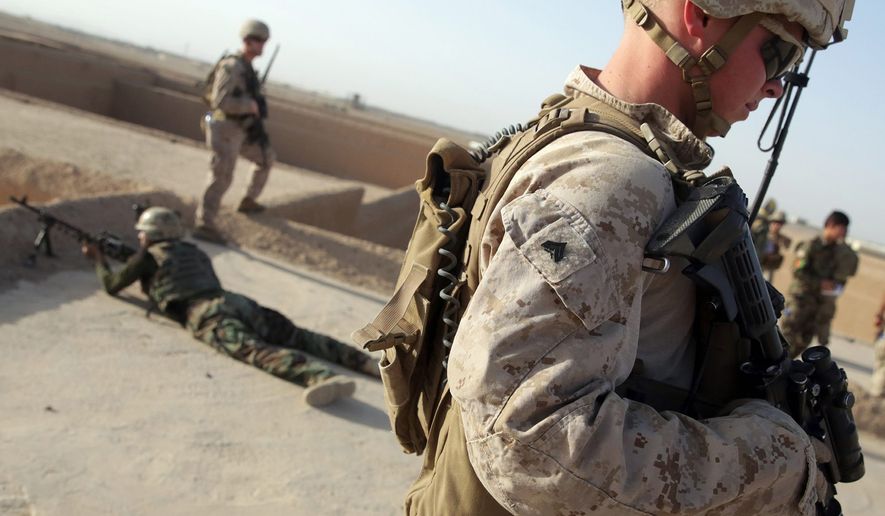A basic misunderstanding by American military advisers on how to stand up a fully functioning military and police force, compounded by unrealistic timelines set by Washington, laid the foundation for many of the challenges faced by the Afghan national security forces 16 years into the war there.
From the onset of the war in Afghanistan and the U.S. mission to train, advise and equip the country’s nascent local and national security forces, the effort was plagued by a failure “to understand the complexities and scale of the mission … in a country suffering from thirty years of war, misrule, corruption, and deep poverty,” John Sopko, Special Inspector General for Afghanistan Reconstruction, or SIGAR, said Thursday.
Throughout the mission, which still continues under the U.S. and NATO-led Operation Resolute Support, American and European advisers were beset by “politically constrained timelines” from the Obama White House, who had outlined a precipitous troop withdrawal schedule that culminated with a full U.S. pullout by 2014, Mr. Sopko said during a speech at the Washington D.C.-based Center for Strategic and International Studies.
His comments coincided with a new SIGAR report chronicling the American and NATO-led mission to create a fully capable Afghan fighting force.
Those two main elements forced ground commanders to misread the overall readiness and capabilities of the Afghan security forces, painting an overtly positive picture of the forces’ progress, “rather than … realistic assessments of Afghan readiness,” said Mr. Sopko.
Compounding the problem was the lack of manpower dedicated to the train and advise mission, he said noting the operation had been “chronically understaffed” — in some cases by more than 50 percent — up until U.S. and NATO forces officially ended combat operations and shifted fully into an advisory role in late 2014.
SEE ALSO: Donald Trump’s war strategy hailed by Afghan president: ‘A difference of day and night’
As a result of such understaffing, U.S. and coalition commanders responsible for the Afghan training mission were forced to assign military units to advise Afghan military and police in areas outside their areas of expertise. Programs focusing on training and advising for the Afghan national and local police suffered the most, according to Mr. Spoko.
In one instance, a U.S. military officer “watched TV shows like Cops and NCIS to learn what he should teach,” he said adding that in eastern Afghanistan, a U.S. Army helicopter pilot had been tasked with training Afghan police officers on basic law enforcement skills.
“Developing foreign military and police capabilities is a whole-of-government mission,” Mr. Sopko said. “However, there is a large “hole” in U.S. government reconstruction activity.”
That “hole” in the previous administration’s approach to Afghanistan has been a regular target for the Trump White House, who has repeatedly hammered President Obama’s timeline-based strategy. The Afghan war plan put forth by the Trump White House forgoes the Obama-era withdrawal timelines while pumping over 3,000 more U.S. troops into the country.
On Wednesday, Afghan President Ashraf Ghani praised the administration for the new plan, calling it “a difference of day and night” during a meeting with Mr. Trump. “The cloud of uncertainty has been lifted, but equally important is your commitment to a political solution at the end of this process,” the Afghan president added.
Meeting on the sidelines of the U.N. General Assembly in New York, Mr. Ghani’s comments reflected a newfound fighting spirit among the Afghans, in light of the new deal, Mr. Trump said. “The spirit is tremendous,” he added.
But the Trump plan will likely open the door to an enduring U.S. military presence akin to American military footprints in Japan and Germany, retired Marine Corps Gen. John Allen, who led U.S. forces in Afghanistan from 2011 to 2013, said last week. “I think we will [still] be there for 16 years, but I do not think it has been a 16-year loss” thus far in Afghanistan, he said at the time.
Kabul’s primary interest is the country’s security and what more Washington can bring to the table to ensure it. That said, a long-term U.S. military presence in Afghanistan is not a decision that is taken lightly,” Afghan Ambassador to the U.S. Hamdullah Mohib said.
“How we see our partnership with the U.S. develop over time will be a decision made by the Afghan people and the Afghan government, over the course of time,” he said last Wednesday, during an exclusive interview with The Washington Times.
• S.A. Miller contributed to this report
• Carlo Muñoz can be reached at cmunoz@washingtontimes.com.




Please read our comment policy before commenting.